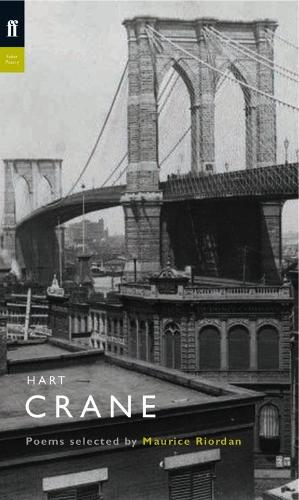
Hart Crane
(Paperback, Main - Poet to Poet)
Publishing Details
Hart Crane
By (Author) Maurice Riordan
Faber & Faber
Faber & Faber
10th July 2008
Main - Poet to Poet
United Kingdom
Classifications
General
Non Fiction
Literary studies: c 1900 to c 2000
811.52
Physical Properties
Paperback
112
Width 120mm, Height 197mm, Spine 9mm
83g
Description
In this series, a contemporary poet selects and introduces a poet of the past. By their choice of poems and by the personal and critical reactions they express in their prefaces, the editors offer insights into their own work as well as providing an accessible and passionate introduction to some of the greatest poets of our literature.
Harold Hart Crane was born in Ohio in 1899. In 1923 he became a copy-writer in New York. White Buildings, his first collection, appeared in 1926, and in 1930 his most famous work, The Bridge, was published. A reaction against the pessimism in T. S. Eliot's The Waste Land, The Bridge was a love song to the myth of America and its optimism a much needed boon to post-Wall Street Crash America. Hart Crane committed suicide in 1932.
Reviews
"'Faber has a poetry list worth bragging about. What other publisher could conjure up a series like this' The Times"
Author Bio
Harold Hart Crane was born in Ohio in 1899. In 1923 he became a copy-writer in New York. White Buildings, his first collection, appeared in 1926, and in 1930 his most famous work, The Bridge, was published. A reaction against the pessimism in T. S. Eliot s The Waste Land, The Bridge was a love song to the myth of America and its optimism a much needed boon to post-Wall Street Crash America. Hart Crane committed suicide in 1932.
Maurice Riordan has published three collections of poetry, A Word from the Loki, Floods and The Holy Land - and is co-editor of two anthologies, A Quark for Mister Mark and Wild Reckoning. He teaches creative writing at Imperial College London.
